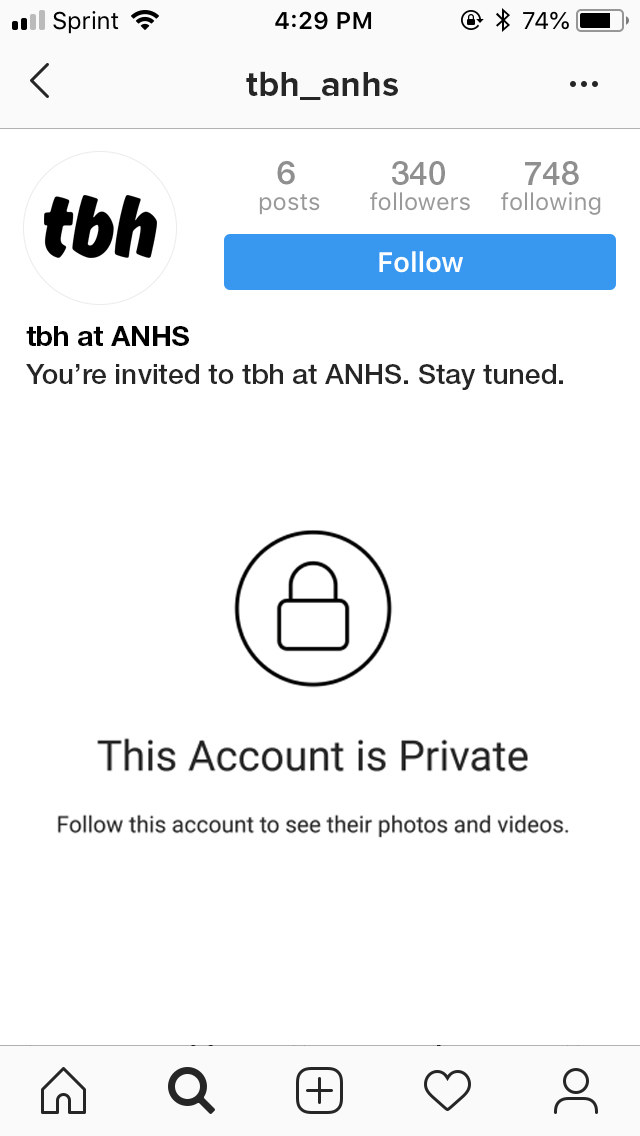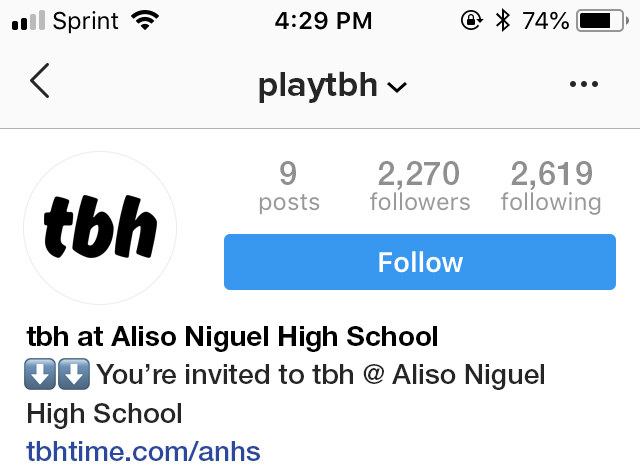
When Facebook purchased TBH last October it got more than just a viral polling app that amassed 2.5 million daily users, mostly teens, a few months after launch. The social network also acquired a carefully honed growth strategy targeted toward high school kids.
An internal document from Facebook, obtained by BuzzFeed News, shows TBH’s leadership explaining a well-tested method the startup used to attract teens at individual high schools to download its app. The note provides a window into Facebook’s growth-at-any-costs mentality and the company’s efforts to keep a key demographic engaged as its popularity among teens declines and it simultaneously runs out of people in the connected world to bring to its platform.
“Our team obsessed with finding ways to get individual high schools to adopt a product simultaneously.”
In the confidential memo, TBH’s founders told their new colleagues of “a psychological trick” that they employed to acquire teenage users en masse — a combination of scraping Instagram for high schoolers’ accounts, playing to youthful curiosity, and taking advantage of class dismissal hours.
A Facebook spokesperson declined to comment on the note or on questions about whether the company employed the growth tactics learned from TBH.
Though Facebook shut down TBH last month “due to low usage,” the app, which the company bought for less than $30 million according to a source, provided plenty of learning opportunities at a crucial time. In addition to helping Facebook launch and fine-tune its own polling tools, the document shows that it also provided growth tactics explicitly designed to target young users.
“The purpose of sharing these tactics is to provide guidance for developing products at Facebook — specifically ones that have not reached product-market fit yet,” TBH’s founders wrote.
TBH-style tactics could be the key to the future growth of the company, which announced last week that 2.5 billion people monthly are using at least one of its apps — including Facebook, WhatsApp, Instagram, and Messenger. In order to maintain that figure, Facebook will need to keep one of its most important demographics entertained, a challenging task considering it’s fallen behind YouTube and Snapchat in terms of popularity among teens, according to a recent Pew Research Center survey.
“Facebook knows they need to win over the next generation and they need to try everything,” said Nikil Viswanathan, a tech entrepreneur who cofounded the popular app Down to Lunch. “They’re smart to spend a little to pick up someone doing something meaningful just so that they can learn.”
Here’s how TBH developed its “psychological trick.”

Dispelling the notion that apps need blowout press relations campaigns to gain early traction — a strategy that only creates “fragmented” user bases and attracts “a handful of Silicon Valley socialites” — TBH’s creators outline “a novel method” to hook high schoolers.
TBH noticed that teens often list their high school in their Instagram bio. So, using a private Instagram account of its own, the company would visit a school’s location page and follow all accounts that included the school’s name. TBH made sure its private account featured a mysterious call to action — something like “You’ve been invited to the new RHS app — stay tuned!” The startup would make one private account for each high school it wanted to target.
The company found teens were naturally curious and would follow the private account back.

TBH’s founding team told their Facebook colleagues they would typically wait 24 hours to collect all inbound follow requests from the high schoolers before moving on to the next, key phase of the strategy.
“At 4:00PM when school gets out (The Golden Launch Hour™), add the App Store URL to the profile,” the TBH team wrote. Shortly thereafter, the startup would make the private Instagram profile public, triggering Instagram to notify students that their requests to follow had been accepted. Teens would see the notification, visit the profile, and be shown a download link in the account’s new public bio. And many followed the link to TBH.
TBH described its methods as “too ‘scrappy’” for a big company.
While TBH did nothing to violate Instagram’s terms of service — Instagram allows for users to create multiple accounts and does not require them to disclose their real identity — it recognized that Facebook might not approve of using the exact methods. Still, the TBH team saw “analogous ways to employ these tactics at Facebook.”
“For example, when using Facebook’s Quick Promos (or QPs), we should avoid providing an instant download link,” the note read. “Instead, we should request push notification permission to alert the targeted users at a later date. That way, we can collect their interest and contact them simultaneously to ensure critical mass during launch hour.”
Read the full TBH memo below:
At tbh, we built 15 products during the five years of our company. We had many painful lessons about product development that led us to design a systematic method of launching and testing new apps. The purpose of sharing these tactics is to provide guidance for developing products at Facebook—specifically ones that have not reached product-market fit yet.
1. Create a reproducible process of penetrating communities
Traditionally, most products get their initial users through press outreach. However, for social products, this is usually a formula for failure: you end up with highly fragmented users across your audience, meaning the community will not have critical mass. Users won’t be able to find their friends, aside from a handful of Silicon Valley socialites who are actively downloading new mobile apps.In addition, the initial product is most likely multiple iteration cycles away from product-market fit. However, due to exposure created by the initial launch, the audience will be fatigued and ignore subsequent updates. And the press will also be unlikely to cover them.
Therefore, it is critical to design a process that allows you to launch vastly different product experiences within specific communities so your product can reach critical mass and so you don’t prematurely exhaust your audience’s attention.
How we did it
Our team obsessed with finding ways to get individual high schools to adopt a product simultaneously. We designed a novel method that was reproducible, albeit non-scalable.
Our first breakthrough was that we discovered that teen Instagram users would frequently list their high school in their bios (e.g. “Sophomore at RHS”). We would simply crawl the school’s place page and then follow all the accounts that contained the school’s name. However, we hit a roadblock: users would view our Follow Requests at varying times of the day so it derailed our efforts to get their attention simultaneously.
We eventually identified a psychological trick:
1. Set the app’s Instagram profile to Private.
2. Set the bio to something mysterious, e.g., “You’ve been invited to the new RHS app—stay tuned!”
3. Follow the targeted users.
4. Wait 24 hours to receive the inbound Follow Requests. (They were curious about our profile so they requested access)
5. At 4:00PM when school gets out (The Golden Launch HouseTM), add the App Store URL to the profile.
6. Finally, make the profile Public
This notified all students at the same time that their Follow Request had been accepted—and they subsequently visited our profile, looked at our App Store page, and tried the app.
We conducted these sorts of launches every few weeks until we arrived at the right product. Each time, we further automated the process and spotted inefficiencies. For example, Apple would review our apps slower when they were completely new submissions. So to solve that, we retained that same app binary—and submitted new products as an app update.
While some of our methods are certainly too “scrappy” for a big company, there are analogous ways to employ these tactics at Facebook. For example, when using Facebook’s Quick Promos (or QPs), we should avoid providing an instant download link. Instead, we should request push notification permission to alert the targeted users at a later date. That way, we can collect their interest and contact them simultaneously to ensure critical mass during launch hour. (Credit to [name redacted] for suggesting that method)
